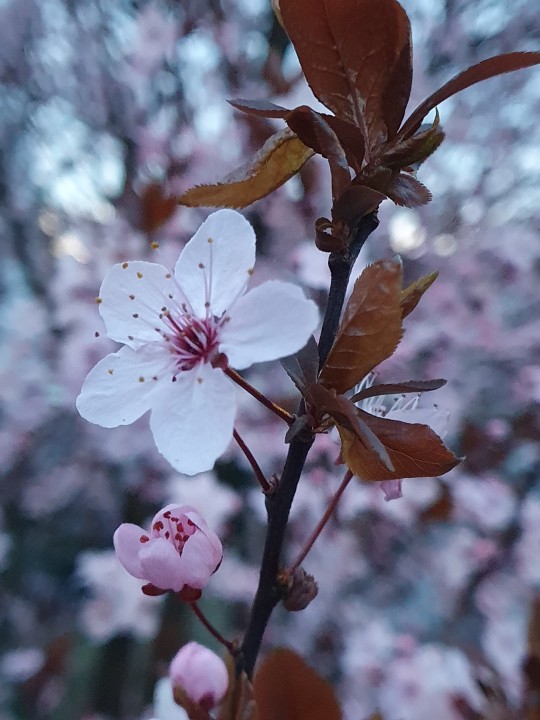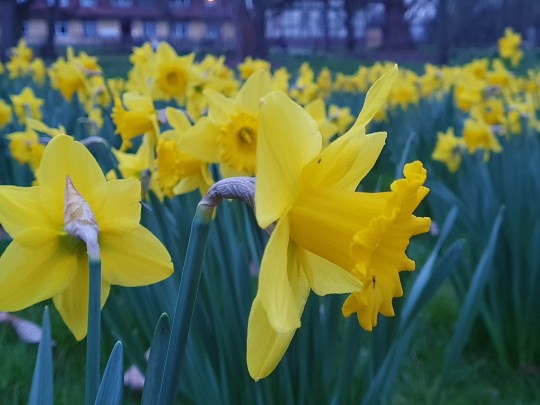#Anemone ranunculoides
Text

Fluorescence reveals hidden details in flowers that attract pollinators.
Certain areas of the flower including some pollen and nectar are fluorescent as well, which could potentially aid in the pollination of flowers.
A yellow wood anemone (Anemone ranunculoides) was imaged with ImageQuant™ 800 using (A) colorimetric and (B) fluorescent imaging modes at UV (red), Cy™3 (green), Cy™5 (yellow), and IR long (blue).
#flower#flowers#fluorescent#nectar guide#pollen guide#nectar guides#pollen guides#floral guide#floral guides#botany#science#wood anemone#Anemone ranunculoides#yellow anemone#yellow wood anemone#buttercup anemone
5 notes
·
View notes
Text

Lei: che fiore è quello?
Io: un anemone
Lei: sicuro? non è un ranuncolo?
Io: ma no, è sicuramente un anemone di qualche tipo
Lei: secondo me è un ranuncolo
Io: aspetta che controllo su internet e ti dico
Lei: ok
Io: ...
Lei: allora?
Io: Anemone ranunculoides 😂
9 notes
·
View notes
Text

B wie Buschwindröschen
#alphabet#augarten#18.2.2023#buschwindröschen#botanik#botanisiertrommel#ari fink photography#vienna#wien#urban nature#herbarium#aus meiner botanisiertrommel#botanical#handymakro#Anemone ranunculoides
0 notes
Text







SPRING IS REALLY HEREEEEE
Prunus sp., Narcissus sp., Anemone nemarosa, Narcissus sp. with unknown beetle, Scylla bifolia, Corydalis cava (pink and white), Anemone ranunculoides.
The yellow colour (or whatever it looks like to the insects) of the Narcissus really attracted all kinds of insects. Flies, beetles, bugs... I should have made a different choice when choosing a tent, because it is also yellow and attracts many, many animals as well when I go camping. The amount of mosquitos is. Not ideal.
03/2024, Germany
6 notes
·
View notes
Text

Anemone x lipsiensis with a few Anemone nemerosa flowers poking through.
Anemone nemerosa is actually one of the parents of the cross. The other is Anemone ranunculoides which has deep yellow flowers.
38 notes
·
View notes
Text

9 notes
·
View notes
Text




A - Anemonoides ranunculoides (L.) Holub - Anemone gialla (Ranunculaceae)
11 notes
·
View notes
Text





April 2019
#plantblr#photographers on tumblr#botanical garden#pulsatilla#hepatica#anemone ranunculoides#wroclawski ogrod botaniczny#wroclaw#poland
14 notes
·
View notes
Photo


Anemone nemorosa (wood anemone or thimbleweed)
Anemone ranunculoides (yellow anemone or buttercup anemone)
#anemone#anemone nemorosa#anemone ranunculoides#herbarium#pressed flowers#pressed plants#wood anemone#yellow anemone#thimbleweed#spring flowers#botanical#botany#white background
510 notes
·
View notes
Photo


Gelbes Windröschen
(Anemone ranunculoides) eine kleine Gruppe blüht vor dem Brennholzstapel etwas später als seine Verwandten, weil dort so lange Schatten ist. Mit Buschwindröschen, Balkan Windröschen und Gelben Windröschen haben wir alle zusammen, glaube ich.
Noch 169 Pflanzen
0 notes
Text


28 | 03 | 2020
anemone ranunculoides | a rare treat
#forestcore#spring 2020#spring#march 2020#my photography#my pics#anemone ranunculoides#it's not exactly rare just in my area#the lower parts of poland are apparently abundant in them but you don't see it often in the mountains#plants#plantcore#forest#nature#naturecore#i only found one#right after getting scared by a boar#👍👍
0 notes
Photo

Straightening anemone by MiroslavStamenov
1 note
·
View note
Photo

A mystery guest appears: I think this is Anemone ranunculoides. When I first saw its leaves, I assumed it was Anemone nemorosa, a plant I added to our garden in 2017. But then this yellow (!!) flower popped out, which means it can’t be the white-flowered nemorosa. I was confused when I thought it was nemorosa because I had no recollection of planting it in this spot, but I’m even more confused now because I’ve never seen this plant before, much less planted it. My best guess is that it might have hitchhiked in along with the lillies of the valley that are planted in this same bed.
#no. 239#FYI in case the leaf situation is perplexing to you#it's just the fringed star-shaped leaf that belongs to the anemone#those other rough oval leaves#belong to a nipplewort that's growing around it#good thing the anemones like shade!
8 notes
·
View notes
Photo

Anemone ranunculoides 2.4.2021,48.597922, 17.971528
1 note
·
View note
Photo

Im April blühen (Gelbes Windröschen - Anemone ranunculoides). Photograph by andreasgaertner.
10 notes
·
View notes
Text
Anemones Flower Facts
Anemones Facts
Anemone is a Greek name and basically means wind flower, which signifies that the wind that blows the petal open will also, eventually, blow the dead petals away.

They are perennial herbs with an underground rootstock, and radical, more or less deeply cut leaves. In medicine, Anemone is used as a treatment for cramps, menstrual problems and emotional distress.
Their elongated flower stem bears one or several, white, red, blue or rarely yellow flowers. There is an involucre of three leaflets below each flower.
The fruits often bear long hairy styles, which aid their distribution by the wind. They produce cup-shaped yellowish, white, purple, violet, or red Anemone flowers.
The most popular are the autumn-flowering Japanese Anemone (Anemone hupehensis).
Yellow wood anemone (Anemone ranunculoides), also known as the Buttercup Anemone, is a similar plant with slightly smaller flowers of rich yellow coloring.
source -theflowerexpert.com
#flower facts#anemones#greek name#wind flower#petaluma#poplular#elongated flower stem#plants and flowers
3 notes
·
View notes